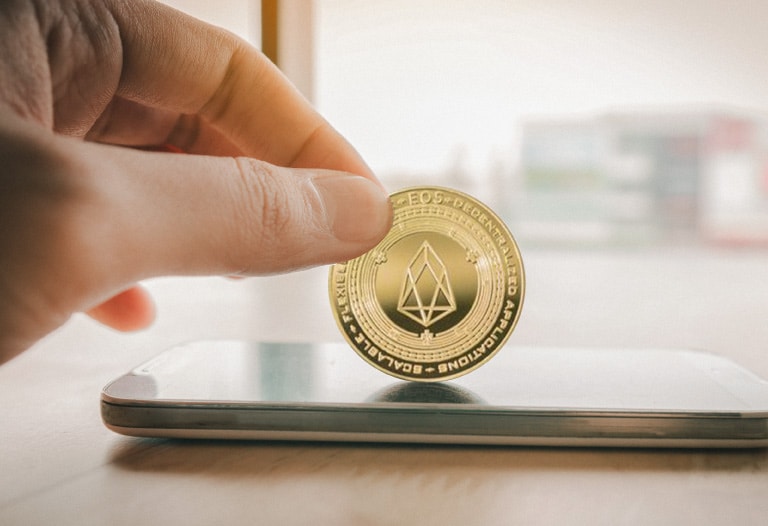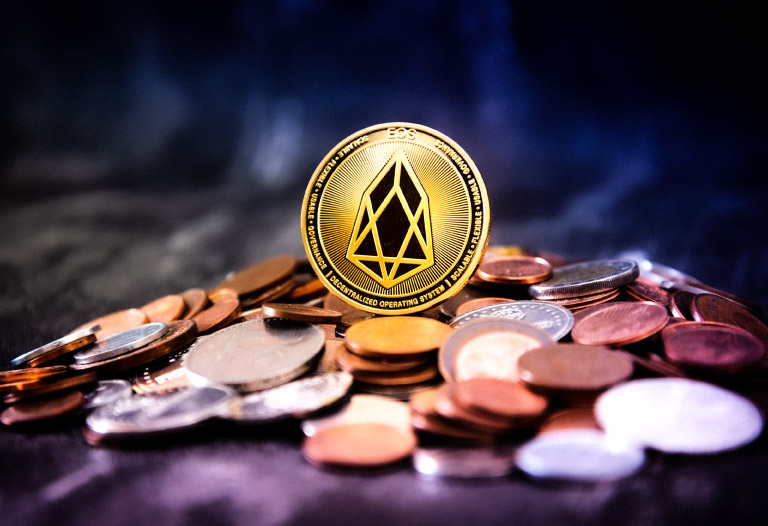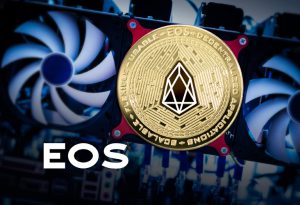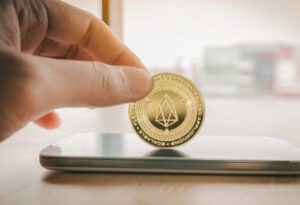
Table of Contents
ToggleUsually, in the cryptocurrency universe, we find a diversity of projects that bet on correcting the problems of other recognized projects such as Ethereum.
Essentially, Ethereum, one of the giants of this ecosystem, possesses difficulties that do not go unnoticed.
One of them is the price of their commissions and their scalability, which, although solutions such as Polygon or EIP 1559 seek to address the problem, has not yet been solved.
In the face of this, new projects are arriving with other perspectives that offer us interesting opportunities.
These include participating more actively in a project’s community or being able to make transactions without paying costly commissions.
Under this scenario, we find EOS, one of Ethereum’s strongest competitors that seeks to dethrone it with its innovative ideas focused on scalability, smart contracts and decentralized applications (dApps).
Want to know what it’s all about? Let’s go for it!
What is EOS.IO?
EOS es una plataforma de cadenas de bloques de código abierto de alto rendimiento, construida para apoyar infraestructuras digitales seguras y flexibles.
Additionally, the EOS blockchain is defined as the next generation that allows developers and entrepreneurs to build securely.
Therefore, it guarantees the handling of thousands of transactions in a single second and without commissions.
It was created by the company Block.one, founded by Daniel Larimer (creator of Bitshares and the DPoS consensus algorithm) and Brendan Blumer.
Block.one is a world leader in open source blockchain technology software.
Thus, through EOS.IoT, Block.one seeks to create trust in transactions, transparency in systems and efficiency in the operation of the world.
The EOS ICO (initial coin offering) went public on June 26, 2017 and lasted 350 days. Over that time, it raised 4 billion, reaching, in January an all-time high of $17.8 for an EOS token.
As a result, it became one of the most successful ICO’s in history and currently remains one of the projects with the most funds raised.
In June 2018, it was officially launched as open source software, facilitating the acquisition of a base for developers to begin exploiting the potential of the EOS currency.

What is the reason for its fame? Let’s talk about its characteristics and proposals
Delegated Proof of Stakeholding (DPoS) and scalability
One of its purposes is to be a Blockchain network with horizontal and vertical scalability. In other words, it works with several nodes (servers) working as a whole in the EOS network.
It also adds resources to a server to increase its capacity. To do this, you can increase the RAM or add larger capacity hard disks.
Certainly, a usual consensus algorithm such as Proof of Stake or Proof of Work was not enough. For this reason, it incorporates the protocol created by Daniel Larimer: Delegated Proof of Stake (DPoS).
Unlike Proof of Stake, the delegated proof of stake presents a major change in mining, as block production is not allowed for just anyone.
Through a voting system, 21 people are elected to be block producers.
Of course, anyone can apply and be part of the creation of blocks, according to the votes they receive.
As a result, it ensures network security and enables high scalability, which translates into more than 80 million transactions per day.
EOS Development Kit and dApps
One of the qualities of EOS.IO is that it allows you to create, deploy and run applications based on its blockchain.
Therefore, smart contracts are written in C++.
They also help you throughout the entire application development process.
They also guide you through every part of the process and help you connect your application to a smart contract.
Currently, one of the most famous dApps is Voice, a social network that allows users’ information to be managed transparently.
Transactions
Transactions are very efficient, as they can be confirmed in as little as 0.25 seconds after issuance.
In addition, you don’t have to write off any additional value for the transaction, nor do you need to pay for a faster block to be added (as in Ethereum).
Apart from this, it makes use of an asynchronous Byzantine fault tolerance algorithm, which facilitates transactions to be irreversible in a faster way (within one second).
Resources within EOS
Although we do not have to pay commissions, we do have to pay for other resources within the EOS network by means of its own token (EOS).
The resources paid are:
- Bandwidth.
- RAM storage.
- CPU computational power.
Their purchase is essential for dApp developers, since, through these resources, the dApp can be operated and monetized.
Proposal system for workers and governance
Within its governance, there are three power groups: the token holders, the block producers and the basic arbitrage forum.
About block products, we have already talked, but what are token holders in charge of?
In addition to selecting block producers, they also make decisions on some EOS funds.
For example, they are in charge of the use of EOS savings (eosio.saving) and “Workers’ Proposals Fund”, where they can allocate the funds collected each year to finance five categories:
- Infrastructure: Works that influence the main line of code, whether they are corrections or maintenance.
- Supervision.
- Community: These are projects for the creation and support of the community, such as activities, educational courses, meetings, and so on.
- Development: It is the support of any idea or project of the community developers.
- Mixed: If there are any proposals that do not fit into any of the above descriptions, they are considered mixed.

Token: EOS
EOS is the native token of the EOS.IO blockchain. It is considered the backbone of the network, since, through this token, it is possible to access the network and pay for making use of different dApps.
It also ensures you have a level of participation within the network and can be exchanged for other cryptocurrencies such as Ethereum Classic or Tron.
You can also buy them through third parties, as long as you pay a fee mentioned by the intermediary for their purchase.
So much for our journey.
If you are interested in reading more articles associated with the news of the crypto universe and its basic concepts, you can click on the topics below.
If you want to join this fascinating adventure that EOS has prepared for us, you can go to our main page and consult our services to support you in this investment process.
We will always be ready to answer your questions and support you in whatever you need, see you next time!







